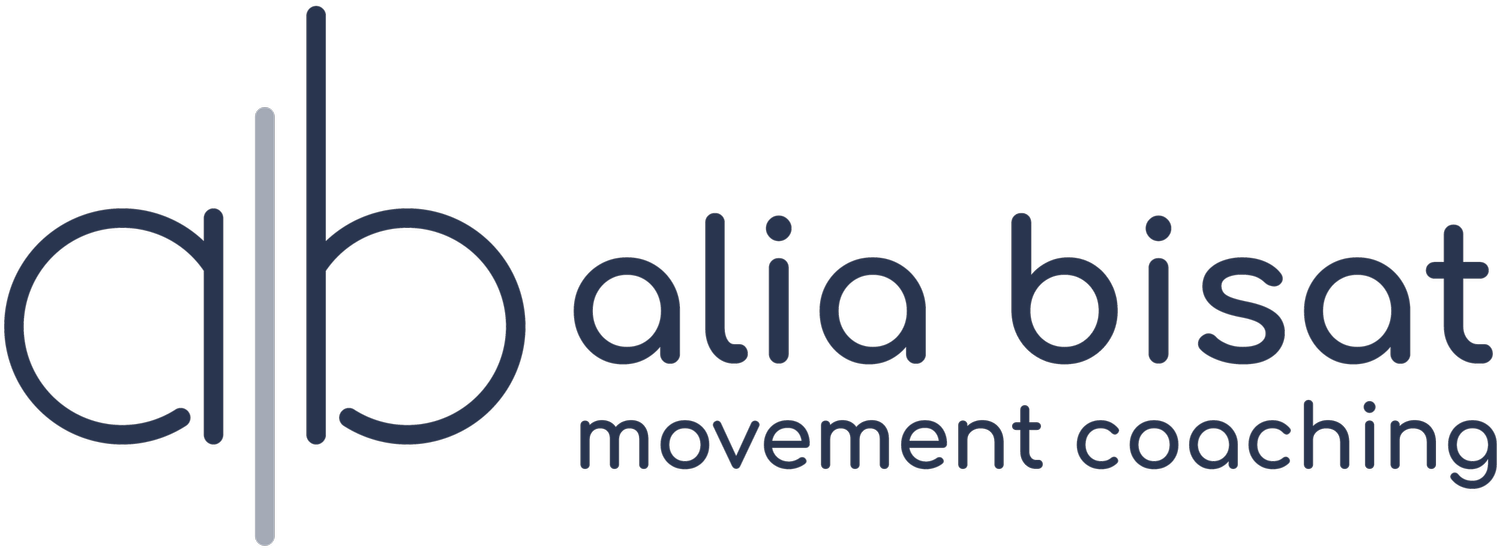Zoom and Isolated Parts
Teaching movement through Zoom, while initially challenging for many reasons, has afforded me many unexpected but valuable perspectives. One of them is where a client chooses to place me as we begin to move (and by me, I mean me on the computer screen. I actually had a dream recently that I was a computer with legs so that I could move myself around as needed during a session).
Because of the nature of limited space in someone’s home, I’m sometimes propped up on a block, on a chair, on the floor, on a mantle. I’m swiveled depending on whether we’re using wall space, and I’m angled up or down depending on if we’re standing or doing floor work. The interesting thing is where people choose to put me during any given exercise. It gives me insight into what they think they should be focusing on, what they think I’m watching, what they think matters when doing the movement.
Very often, I get a close up and isolated view. For instance, if we’re doing something like a calf raise which takes place standing and facing a wall, many clients choose to put me on the floor or angle me down in such a way that I can see only their feet, ankles, and maaaaaybe as far up as the knees if I’m lucky. I politely ask them to move me back as far away as possible. This is such an insight into the way we view the human body as we’ve been taught by our health system, anatomy books, and isolated exercise modalities. If we’re doing a calf raise, the only thing that must matter is the calf. If we have knee pain, the only thing that must matter is the knee. If we’re lifting our arms over our heads, the only things that must matter are the head and shoulders. In reality, that’s never how the human body moves.
When you do a calf raise, I want to see what your feet are doing, yes. But also want to see where your hips go, what are shoulders doing, and if you’re breathing. I need to see the whole thing. If you have knee pain, I’m scanning everything from your ribcage down to your feet and everything in between. When you’re doing an overhead movement with your arms, I want to see your feet, your pelvis, your ribcage.
We have many contributors to this perspective. Anatomy books do a nice job of neatly isolating every muscle/bone/ligament in the body without giving credit to how it all moves together. Exercise culture does a nice job of “targeting” everything whether it’s to stretch your piriformis or reduce the flap of your triceps. One of the biggest downfalls of clinical physical therapy is the rigidity of the specificity of the treatment. If you have knee pain, and your PT prescription is for your knee, a PT generally won’t be able to work with your foot. But what if how you use your foot is the issue? I had a client once tell me that she went in to PT for her elbow and they never looked at her shoulder because shoulder PT was an entirely different department. The shoulder is the most mobile joint in the body—one joint up from the elbow. Wouldn’t it make sense to look at that too?
The way we perceive our bodies affects how we move our bodies. If we perceive ourselves as only a compilation of individual bones and muscles, finding connectedness, integration, and fluidity in how we move will be challenging.
You can try a couple of things. The next time you take your arms overhead, notice how your pelvis moves and what your feet do. Or if you’re doing a lunge, notice what you shoulders are doing and how you’re breathing. You can also play with visualization. The next time you practice yoga, move around on the floor, or walk up the stairs, imagine your body is a spider web. No part of a spider web can move without the rest of the web being affected in some way. Allow that visualization to help you feel like your movements are more cohesive.
keep moving.
